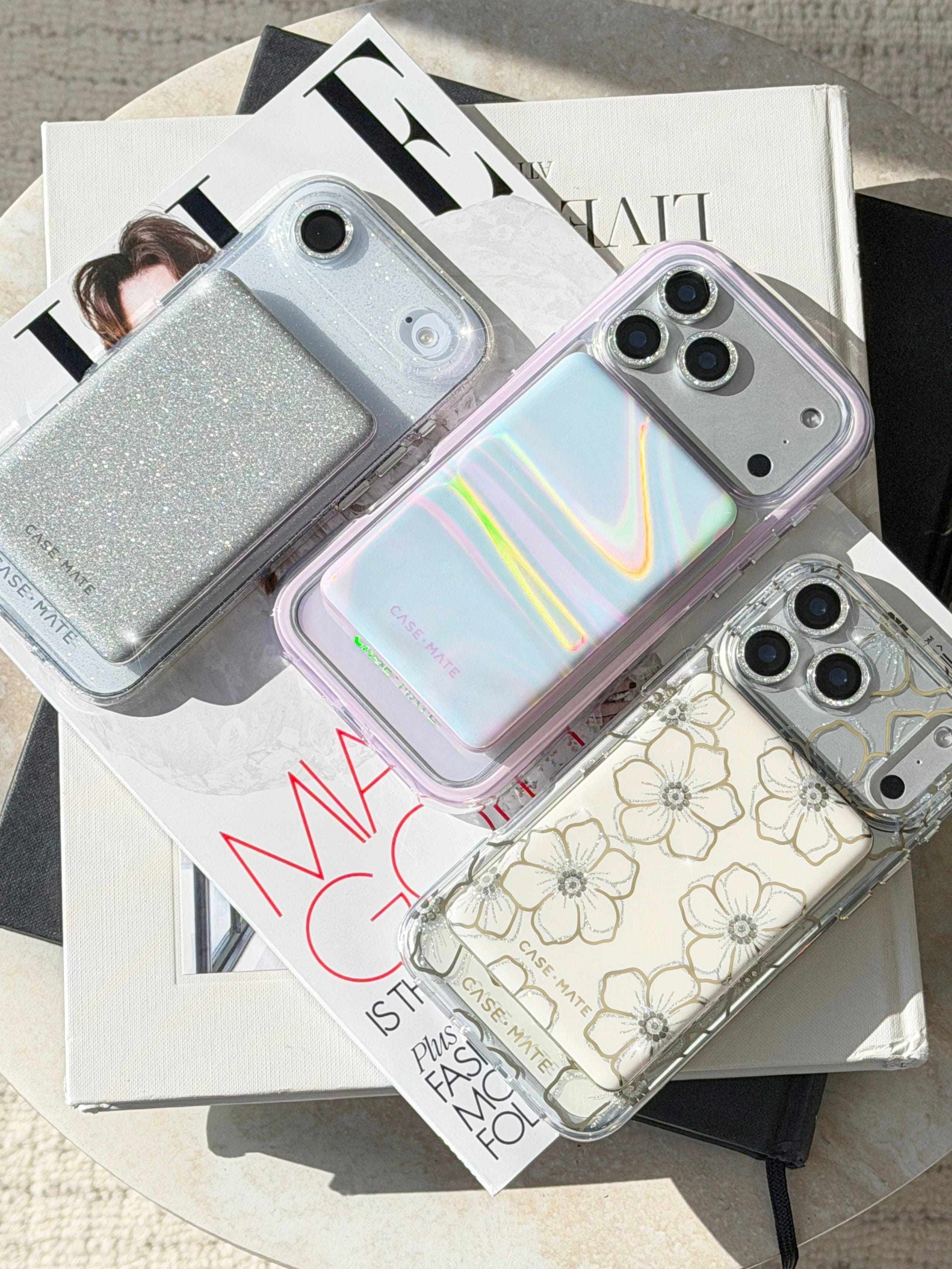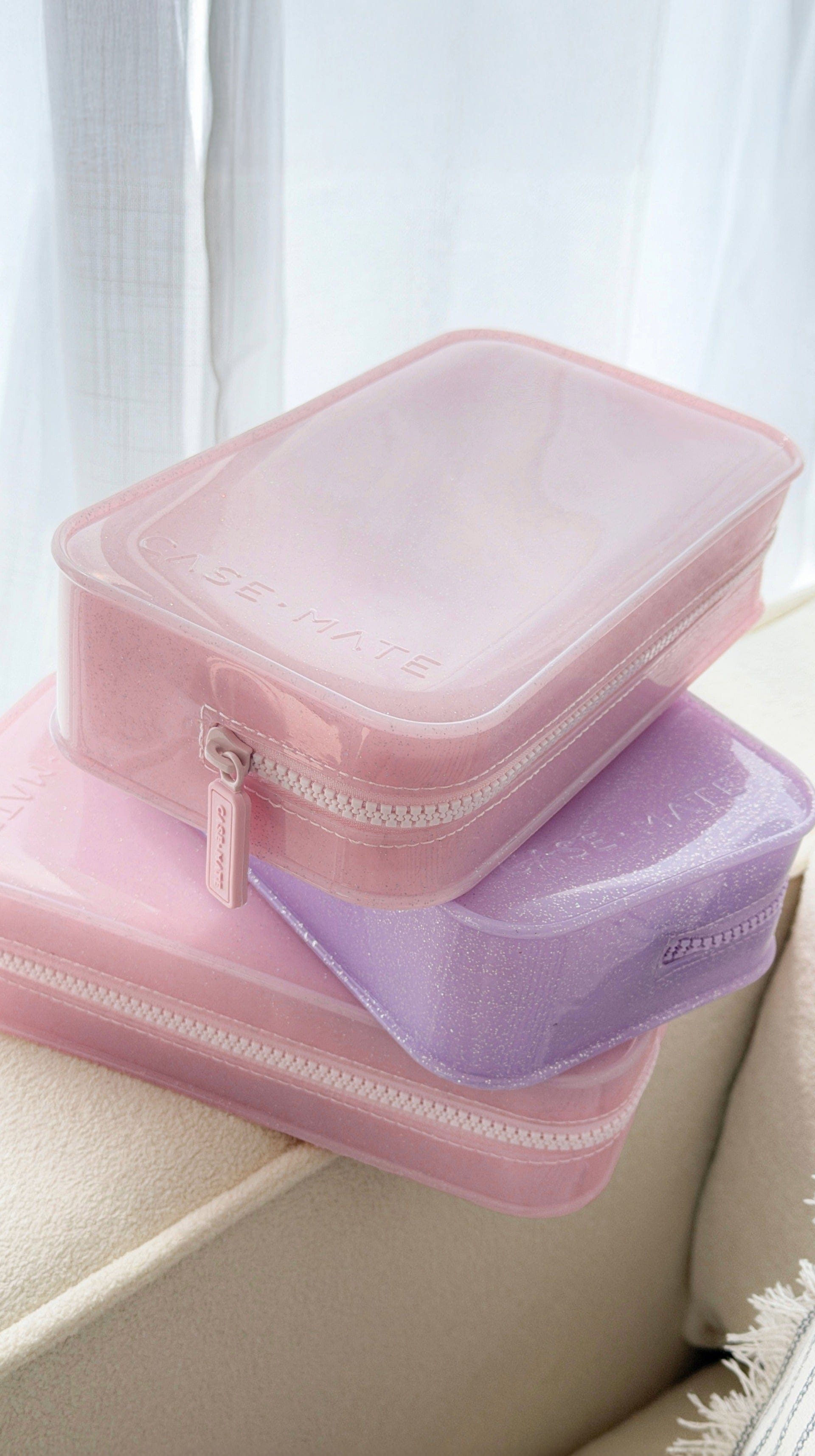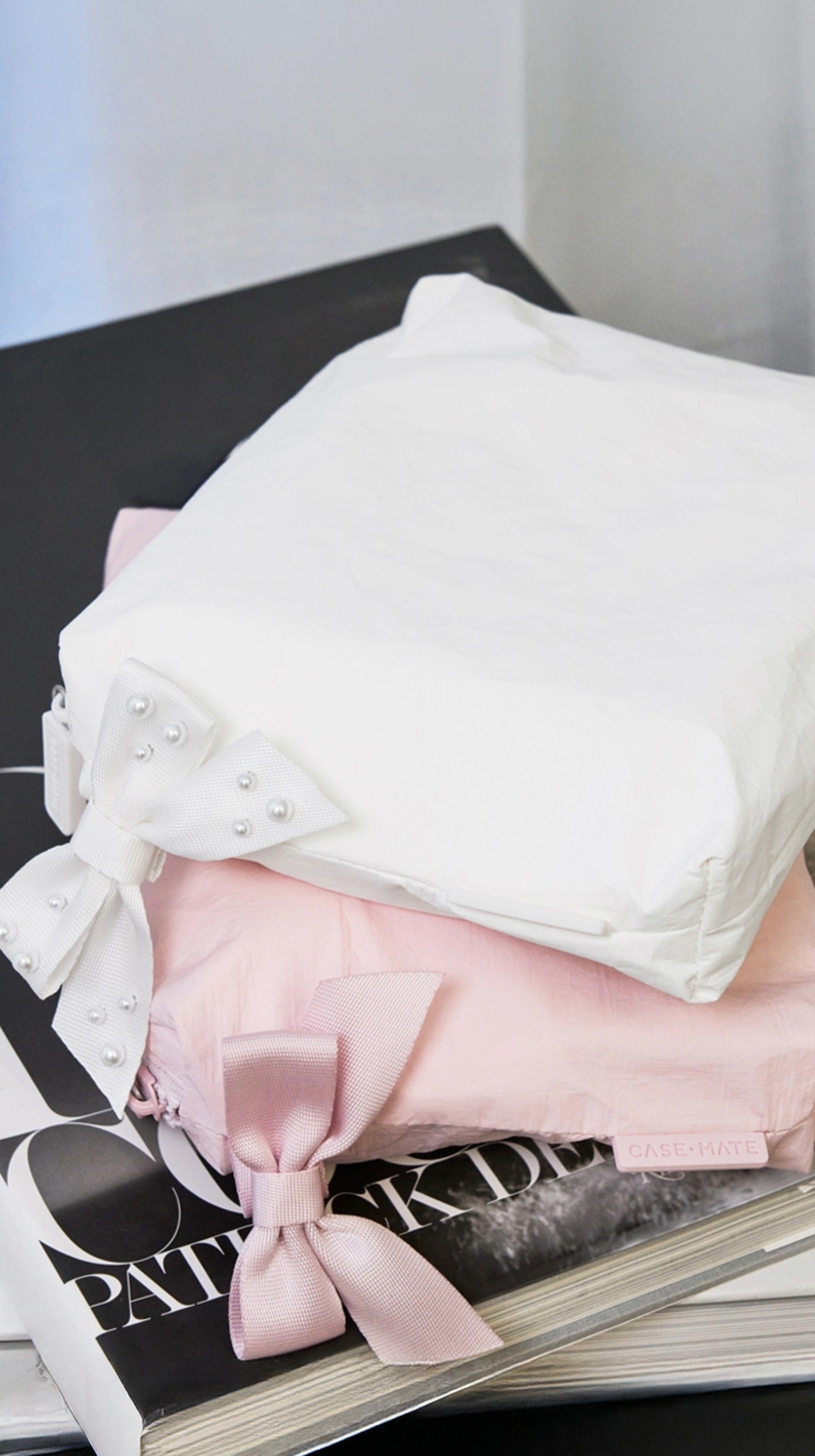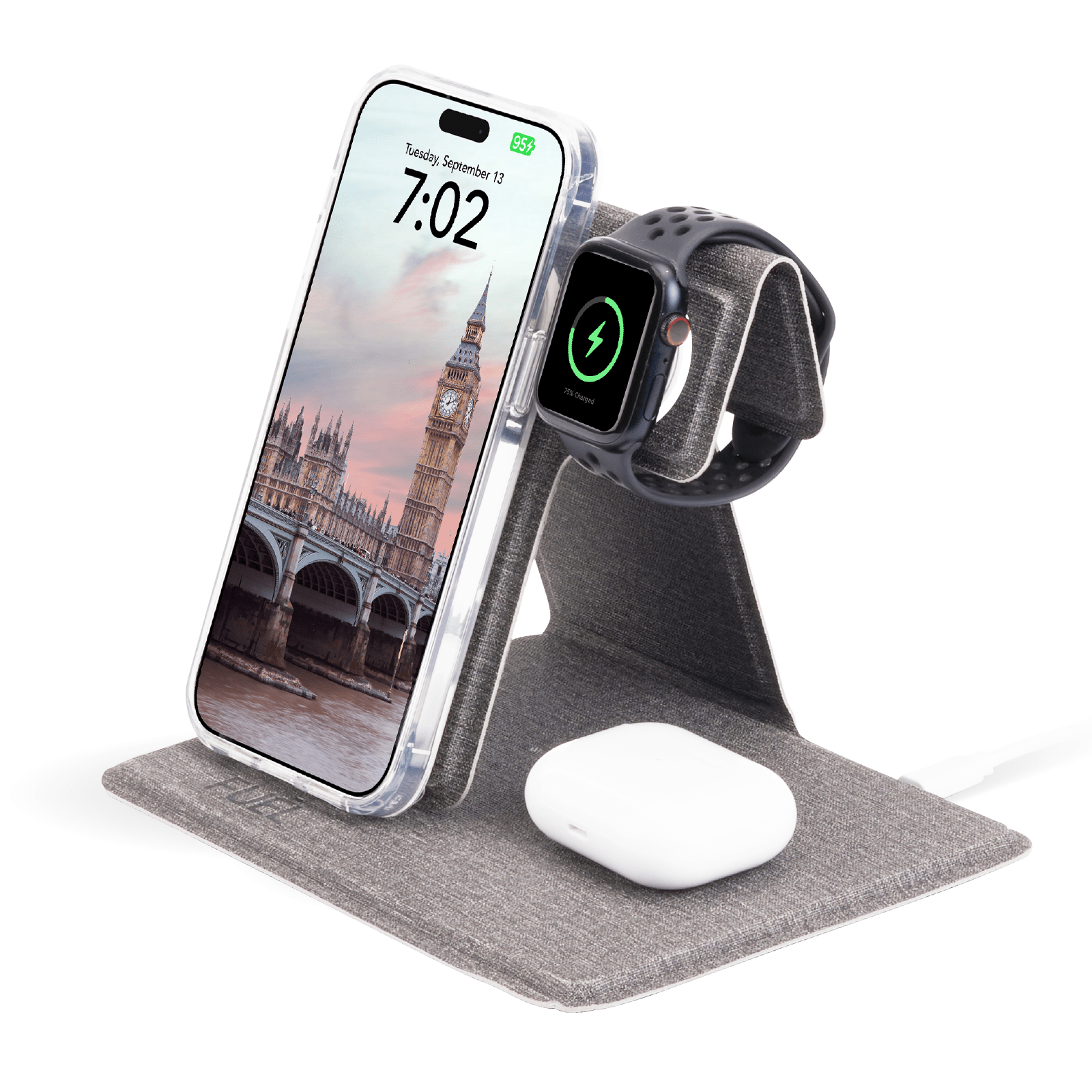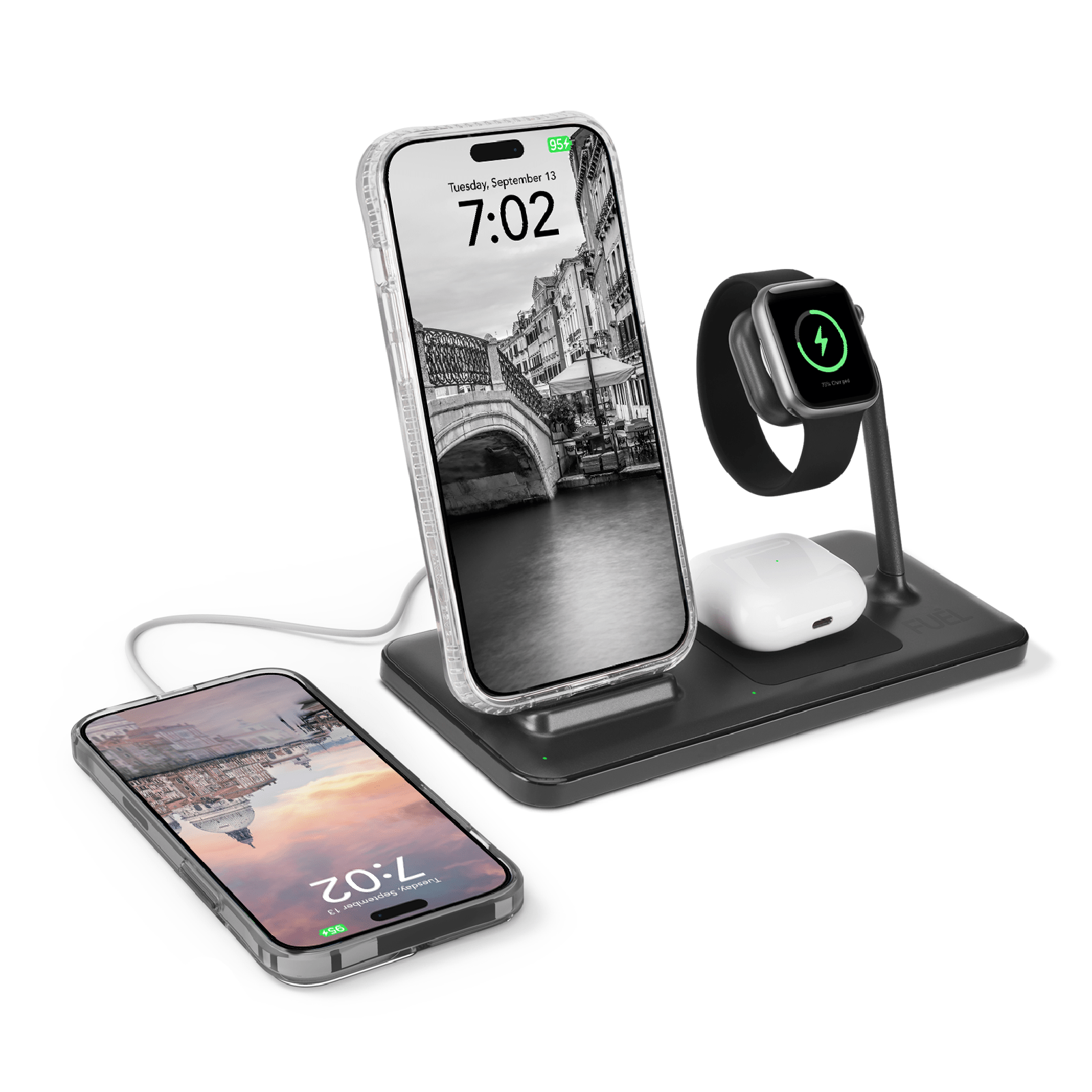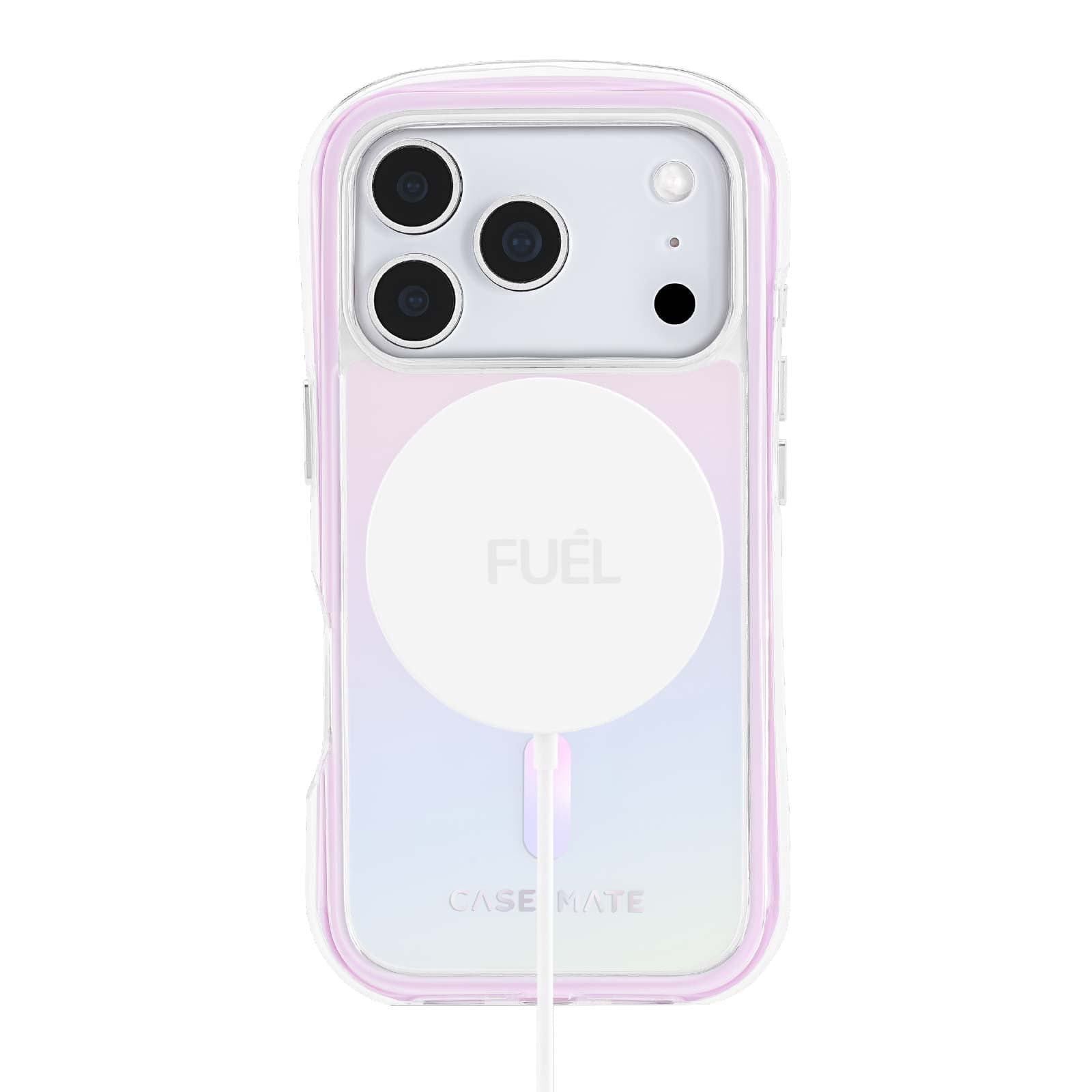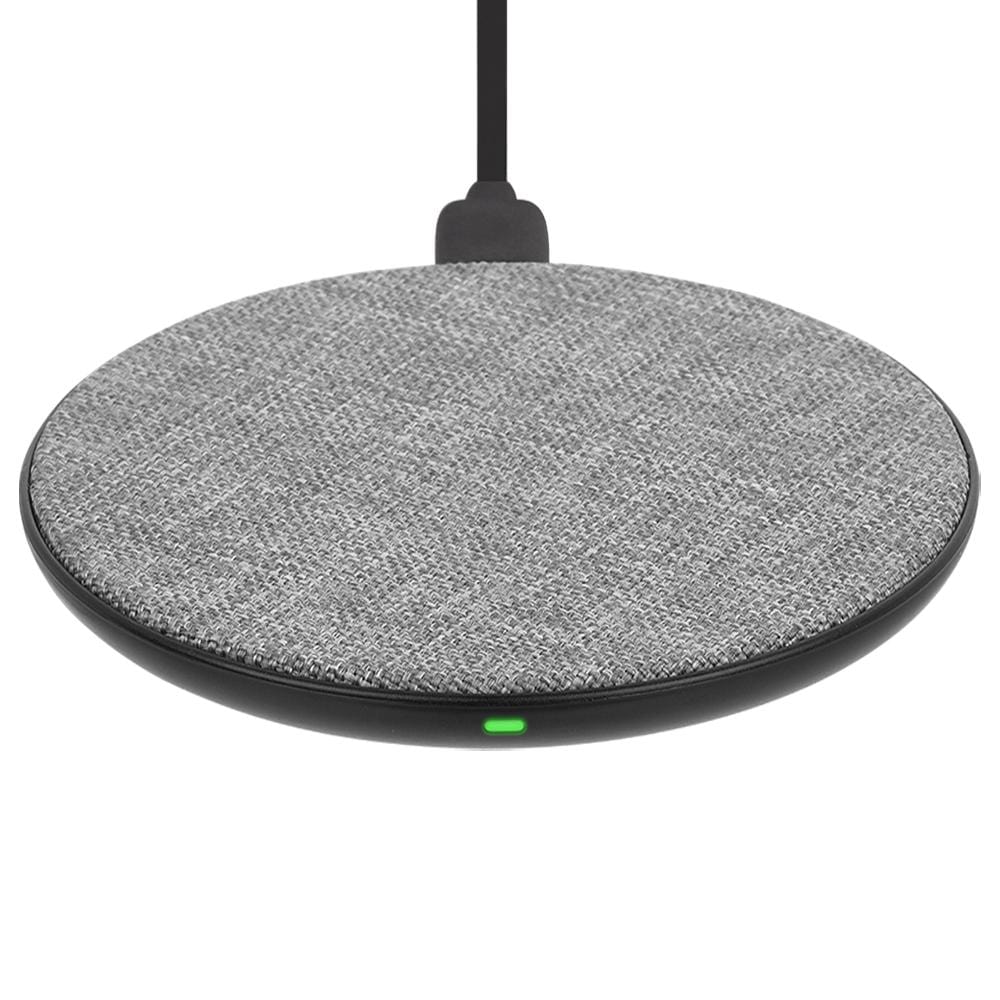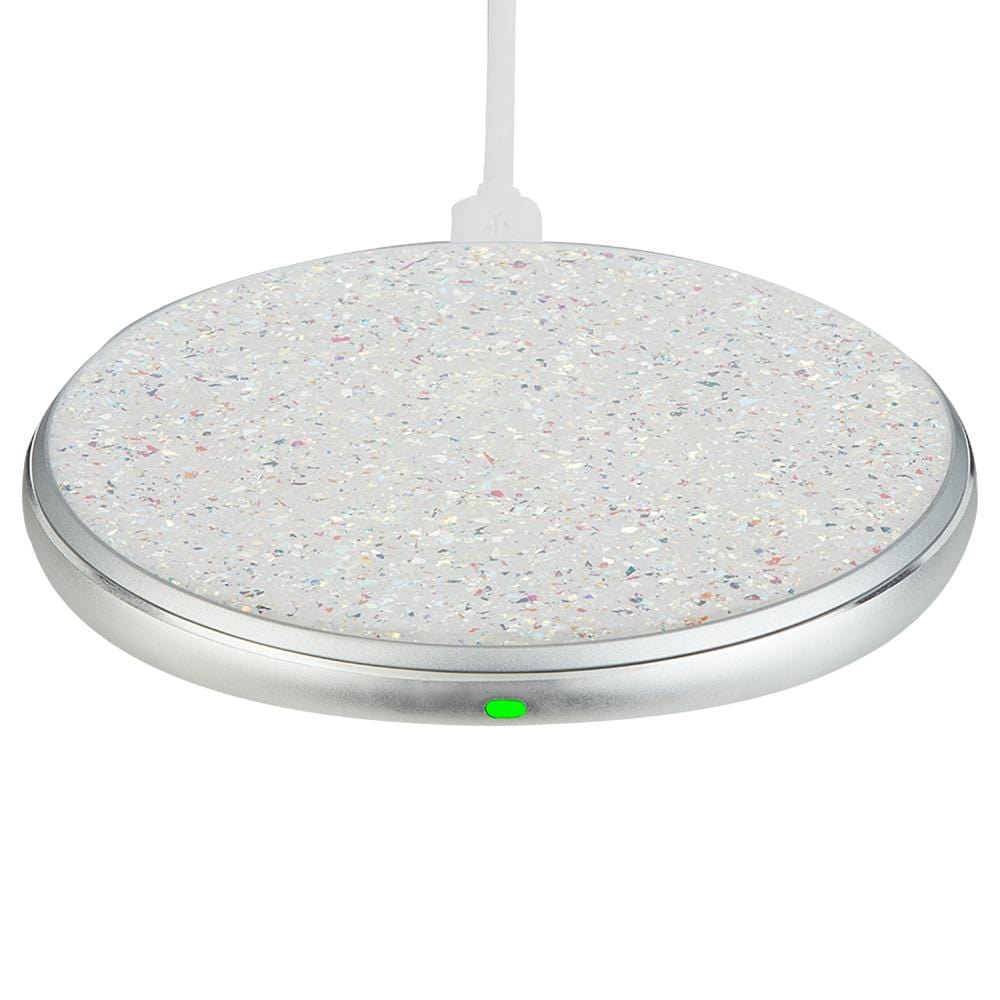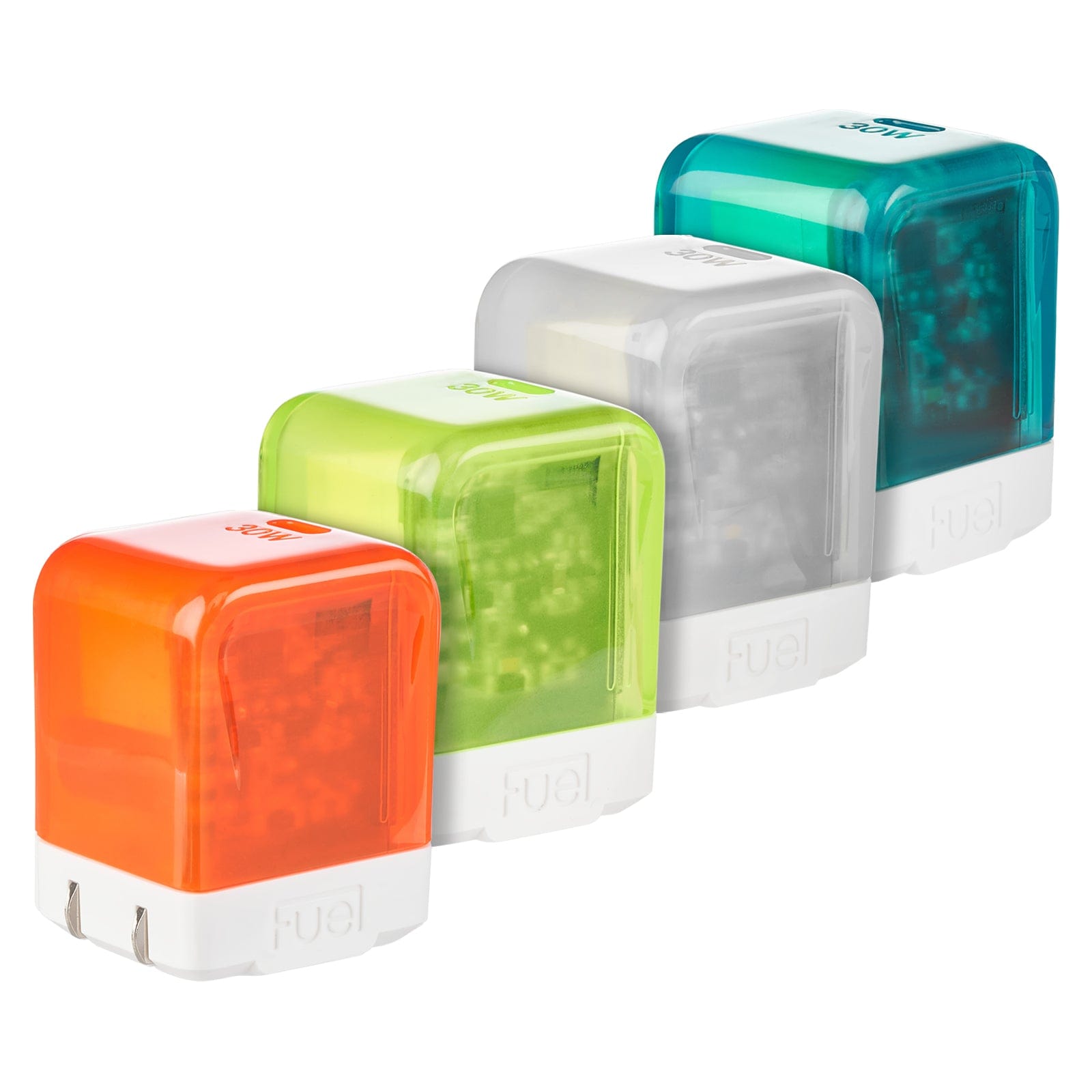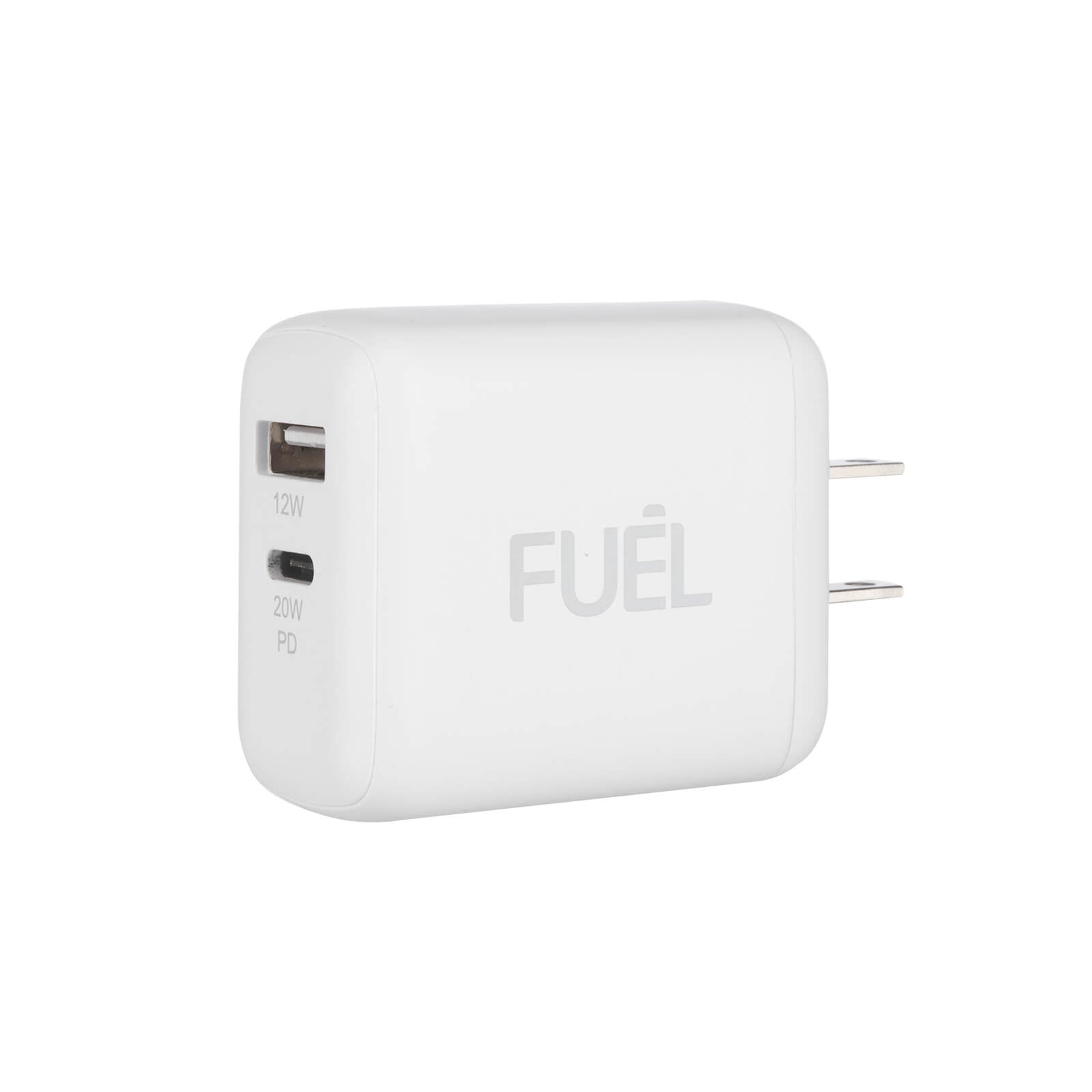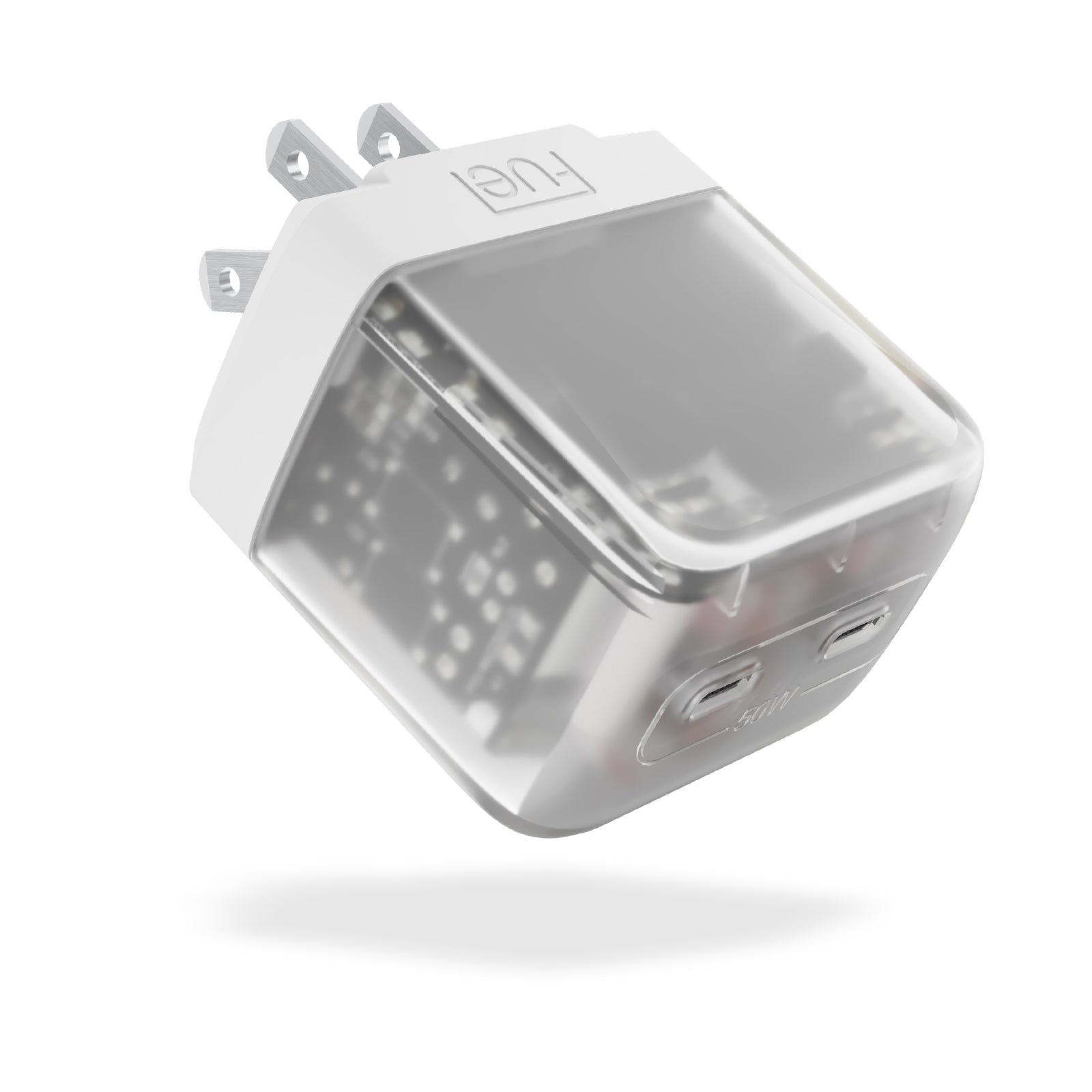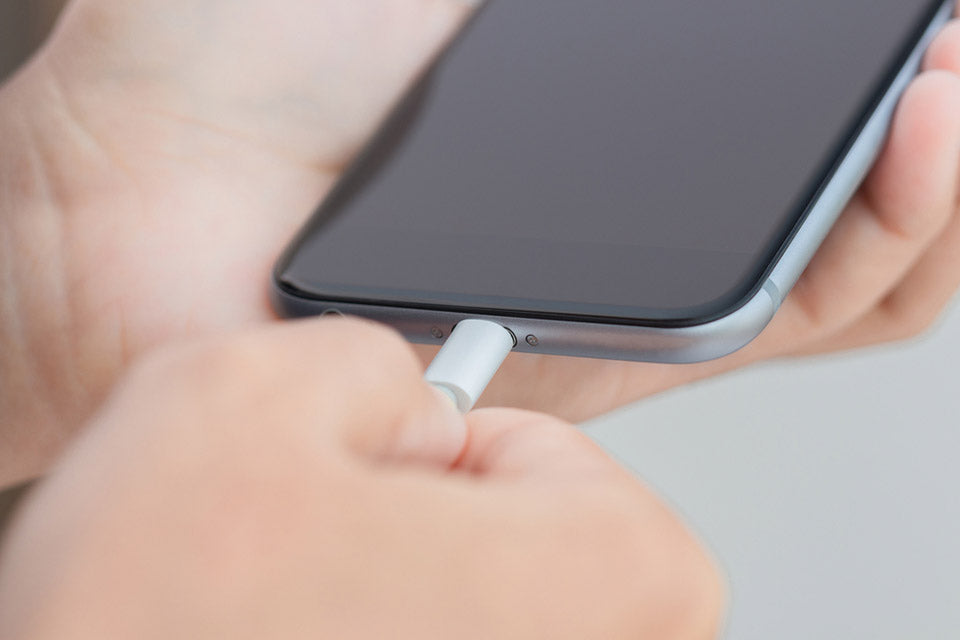Cart
Your cart is empty
A wireless charging device is a super convenient piece of tech gear to have. Whether you keep it on your desk at work, on your nightstand at home or clipped to the vent of your car, a wireless charger can make charging your electronic devices, especially your iPhone or Android, rather effortless. It's so easy that we almost take it for granted. Even if you use it on a regular basis, there’s a lot you may not understand and some important details you may have overlooked.
How does wireless charging work? In this guide, we break down how wireless charging works in an easy-to-understand format. Plus, we offer some of our best wireless charging phone accessories and devices to help you make the most of this wonderful and convenient energy-boosting feature.
WHAT IS WIRELESS CHARGING?
Wireless charging can be found in all sorts of phone accessories. In general, a wireless charger is often a pad or station that is free of messy cables and invites us to place a compatible wireless charging device down on it. Both iPhones and Androids can work with wireless charging, given that they have the internal components and tech to do so. It’s a really simple yet effective charging method that has gained popularity in recent years.
THE TWO WIRELESS CHARGING STANDARDS
Before we dive into how wireless charging works, let’s discuss some of the charging methods that are used. One thing you need to understand about wireless charging is that there are two standards: the Qi standard and the PMA standard. Both use the same inductive charging. The real key difference is in the amount of wavelength used.
PMA Wireless Charging: Short for Power Matters Alliance, the PMA wireless charging standard uses a wavelength of 277-357 kHz band.
Qi Wireless Charging: Pronounced “chee,” the Qi wireless charging method was created by the Wireless Power Consortium (WPC). This is the most commonly known and popular wireless charging method of the two standards and is what many brands use inside their wireless charging devices. It offers a 100-205 kHz band.
THE SCIENCE BEHIND WIRELESS CHARGING
Wireless charging sounds like one of the modern advancements of the 21st century. But the basic principle of wireless charging has been around a lot longer than that. The seemingly modern science of wireless charging is quite similar to Nikola Tesla’s resonant-inductive coupling process – the method he used to light his laboratory in the late 1800s (yes, that long ago).
This inductive charging method worked by creating a magnetic field between a transmitter and a receiver, which transmitted electricity directly through the airwaves. Eventually, Tesla created and patented the Tesla coil tower that shot electricity across a space. He had hoped to one day use this invention to create a wireless power grid to use his inductive charging on a broader scale. While this never happened in his lifetime, it’s very close to the way we wirelessly charge our phones today.
Fast forward to today: A wireless charging device or accessory is designed with an electromagnetic coil positioned inside. These electromagnetic coils are basically an induction coil in a charging base, which creates an antenna-like magnetic field that sends energy to your phone. But how does the phone catch this electromagnetic energy? Through a receiver. Inside your phone is an even smaller electromagnetic coil that receives the energy thrown out by the induction coil and transfers that energy back into the phone’s battery.
That’s what is going on beneath the hood when we place a phone or device down on a wireless charger.
DISCOVER THE BEST WIRELESS CHARGERS
THE DOWNSIDE OF WIRELESS CHARGING
All in all, wireless charging offers a mess-free, convenient method to charge your phone, earbuds, smartwatch and more. It provides lots of benefits, which is why there are so many wireless charging compatible phone accessories available to us. However, there is one downside to a wireless charging accessory: It is not as efficient as wired charging or a fast-charging cable.
In fact, distance plays a huge role, too. The further away your device’s receiver is from the wireless charger’s transmitter, the slower it will charge. Essentially, the magnetic field will struggle to transmit power to the device if it’s not directly on top of the wireless charger. Even if it’s knocked off by a few millimeters, it can slow the charging process.
Common sense says that this drawback could be easily solved by simply building a larger transmitter. However, it's not that simple. Creating a larger transmitter would mean having to build a large wireless charging receiver inside the phone. And the science is just not there yet.
Still, there are advancements in wireless charging being made each year. Eventually, we may see phones with smaller and stronger receivers, allowing them to pick up energy even if it’s a little more than off-kilter from the wireless charger.
HOW FAST IS WIRELESS CHARGING?
So if wireless charging is not as fast as plugging your device directly into the cable, how fast is it? What can you expect from a wireless charging device and are there ways of making it faster?
First, you must understand that the typical maximum charging speed of a device is 10 watts. While you can find 15-watt chargers and stronger, 10 watts is average. Fast chargers are something else entirely. You will commonly find fast charge adapters to offer anywhere from 10 to 65 watts, using the Quick Charge technology and Qi standard.
However, wireless charging has a hard time keeping up with this level of speed. Instead, a wireless charger presents a few challenges – like physical design and materials – that prevent it from charging as efficiently as it should. Otherwise, the transmitting coil inside would do its job properly and without a hitch. Look at it this way – there was once a time when wireless chargers wouldn’t work with a phone case. Now, that’s not an issue. So, as it goes to show, the speed and efficiency of a wireless charger will continue to get better in time, regardless of aligned coils.
Today, you can find a wide range of fast chargers to get your device charged in no time. While it’s not as fast as a direct cable contact, Case-Mate even offers wireless fast chargers that can reach up to 15 watts.
DISCOVER FUEL FAST CHARGERS
WIRELESS CHARGERS AND PHONE CASES: WHAT TO EXPECT
Does wireless charging work with a case? Yes, a wireless charging accessory can in fact work with phone cases. However, there are some considerations and caveats you should be aware of before just buying any phone case.
Bulky Cases Are Getting Better
For starters, bulky cases can work against you when it comes to wireless charging. Not all thick cases, but some! Sometimes, thicker case materials have trouble making contact with the wireless charger’s inductor. However, many brands like Case-Mate have already taken this into consideration and designed thicker cases in a way that still makes them compatible with wireless chargers. One excellent example of this is our Pelican case series. Designed to be rugged, each Pelican phone case is quite thick, but they will without a doubt still pick up a wireless charging energy.
Choose Plastic Over Aluminum Cases
Aluminum and metal-backed phone cases can hinder your phone from getting the boost that it needs. While they are durable and robust, aluminum phone cases can disrupt the charge. Case in point: The latest iPhone model dropped its aluminum shell for a solid glass backing, helping it to conduct a charge on the latest wireless charging devices and accessories.
THE BENEFIT OF MAGSAFE PHONE CASES
For those who appreciate a phone’s wireless charging capabilities, MagSafe phone cases offer an advantage. What does a MagSafe phone case do, exactly? MagSafe compatible devices – whether that is a phone case, a battery pack or a car vent phone mount – all feature a series of magnets designed to snap to a phone’s internal wireless charging coil. Because the MagSafe magnets are designed to snap into place, this ensures that your phone won’t stray or slide off the wireless charging platform, disc or whatever type of wireless charging stand is offered. Plus, when you pair a MagSafe phone case with a Qi-enabled wireless charger, you can get a faster charge.
Sadly, there are only a few phones currently available that offer a MagSafe internal coil: the iPhone 12 series and the iPhone 13 series. Hopefully, MagSafe will become the norm for Apple phones and possibly even Androids someday, but for now, these two devices are what offer this unique snapping feature. Until then, if you have one of these devices, be sure to check out Case-Mate’s collection of MagSafe cases.
DISCOVER CASE-MATE’S WIRELESS CHARGERS
If you want to ensure a good wireless connection, there are two accessories you need to consider: the phone case, which we have outlined above, and the wireless charging accessory itself. Case-Mate offers quality phone cases designed to connect your wireless charging phone easily to a wireless charger.
However, it helps to have a well-made compatible wireless charger that keeps your phone’s internal transmitter coil right on target. You should never have to worry that your phone is off by a few millimeters or have to fidget with it to position it just right. That’s what Case-Mate wireless chargers offer!
Here is a collection of Case-Mate’s wireless chargers, from power discs to power banks to power stations and stands, including details of each device.
Power Discs
Power Discs offer a flat round pad that rests seamlessly on a tabletop, deskspace or countertop – wherever you need it, really! With designs from the Rifle Paper Co., you can add a beautiful, colorful touch to your space. In the Power Disc collection, you will also find a Twinkle design to showcase your phone and a gray fabric design for a more minimal look.
The Power Discs are easy to operate. Simply drop your device on the pad and let it charge. For Apple devices, you can expect a 7.5W charging speed and for Samsungs, a 10W charging speed. The convenient LED light indicator will alert you that the device is placed properly on the pad and charging.
FUEL Battery Pack
TheFUEL Battery Packoffers snap-and-go wireless charging. No desk or tabletop needed! With strong, built-in magnets to work with MagSafe phone cases and devices, the FUEL battery pack is both Qi-compatible and offers fast-charging up to 10W. However, it can also offer a direct charge and be used as a power bank with a USB-C port and lightning cable included with it.
The FUEL Power Station
If you need to charge more than one device, the FUEL Power Station is the way to go. With three wireless charging pads, you can boost your iPhone, AirPods and Apple Watch all at once. Plus, it also offers a USB-C charging port for any other devices you may have or a friend or family member’s Android device. The Apple Watch stand features a magnetic charger to keep the watch in position and charging effectively. Plus, each wireless charging area offers fast-charging up to 15W and is Qi-compatible.
EXPLORE ALL CASE-MATE WIRELESS CHARGERS TODAY
How does wireless charging work? Effortlessly, if you choose the right products from a reputable brand like Case-Mate! Explore our entire collection of wireless chargers today. And if your phone is fitted with a MagSafe magnetic component, be sure to check out our MagSafe compatible accessories, too – from card keepers to power banks and everything in between.
Whether you are an Apple or Android user, learn more about your phone tech and options on the Case-Mate blog.
Image Credits
December22/Shutterstock.com


